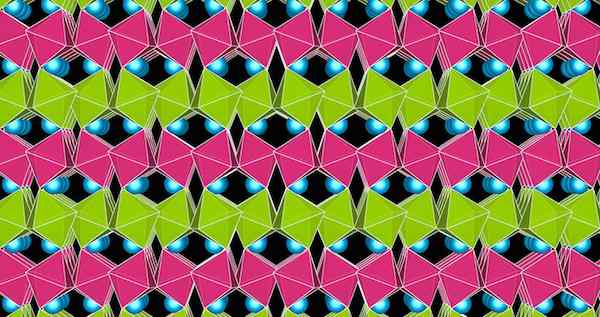
James Rondinelli—assistant professor of materials science and engineering at Northwestern University and ACerS member and awardee—and his research team are on a hunt for a rare and elusive creature: multiferroics.
What are multiferroics?
“These compounds combine two or more primary ferroic properties together in a single system,” Rondinelli says in an email. “The Wikipedia page is pretty accurate because we edited in during a conference on the topic a few years back.”
Rondinelli’s team is interested in multiferroic materials that combine ferromagnetism—a switchable magnetic moment, “like that on your refrigerator magnetic,” he says—and ferroelectricity—a switchable electric dipole.
“These two properties are typically contra-indicated—if a material exhibits, say, ferromagnetism, then it usually will not exhibit ferroelectricity for some very fundamental physical and chemical reasons,” Rondinelli explains in the email.
He continues: “You need a compound to have a transition metal from the d-block of the Periodic Table with unpaired spins for magnetic ordering, whereas most conventional mechanisms for ferroelectricity require that you do not have unpaired spins on the cations in the compound. Thus, the tendency is for mutual exclusion of the two properties in the same phase. This feature makes them quite interesting from a fundamental perspective and attractive for technology applications—if such materials can be found.”
Those applications include electronic and spintronic applications, as well as the ability to create lower-power electronics. That market is so large that many past research efforts have searched for multiferroics, with some limited success.
“Researchers have spent the last decade or more trying to find materials that exhibit these properties (at room temperature) and new strategies to make the properties coexist,” Rondinelli says in the email. “There have been some discoveries, with the most promising compound being an iron-based oxide, BiFeO3, about a decade ago. There are more examples and varying strategies, yet nearly every approach to date has focused on searching for multiferroics in insulating magnetic oxides, because the compound must be insulating for ferroelectricity to exist.”
But Rondinelli’s team had a different idea, based on the lab’s previous research on polar metals. “This was actually our entry point into the problem,” Rondinelli says. “We were and are studying polar metals (watch Rondinelli’s video about polar metals here), which are as rare as functional multiferroics. We reported a few years ago in Nature Communications a set of operational principles to guide their discovery.”
To get to multiferroic materials, the team used quantum mechanical calculations to explore which materials might be promising. Those studies pointed towards lithium osmate, a non-magnetic and non-insulating material. The researchers sandwiched the polar metal in between non-magnetic, insulating, and ferroelectric material lithium niobate.
Combining the two unlikely materials resulted in a superlatticed material that was insulating, ferromagnetic, and ferroelectric at a quantum scale at room temperature.
“In our paper, we turn the traditional paradigm upside down. We show that one can start with a metallic oxide (conductor) that is also polar—a structural feature and prerequisite for ferroelectricity—and can drive a metal–insulator transition in the oxide by a combination of correlation effects and nanoscale heterostructuring.”
Rondinelli explains the unusual phenomenon in the email: “Owing to the physics of the electron-electron interactions in the material, the transition drives a simultaneous appearance of magnetic order. Hence, we derive a new design strategy for realizing multiferroics in the paper and demonstrate it using quantum mechanical calculations on a candidate compound that should operate at room temperature: Start with a polar metal and make it insulating through an electronic phase transition.”
Rondinelli says that multiferroics have many potential electronic and spintronic applications, the largest of which is for memory storage or logic processing. “Specifically a magnetic bit can be written with an electric field, rather than a magnetic field that is generated by a circulating current, which requires more energy. This can lead to lower-power electronics.”
“Our work has turned the paradigm upside down,” Rondinelli says in a Northwestern University press release about the work. “We show that you can start with metallic oxides to make multiferroics.”
The paper, published in Physical Review Letters, is “Design of a Mott multiferroic from a nonmagnetic polar metal” (DOI: 10.1103/PhysRevLett.115.087202).

